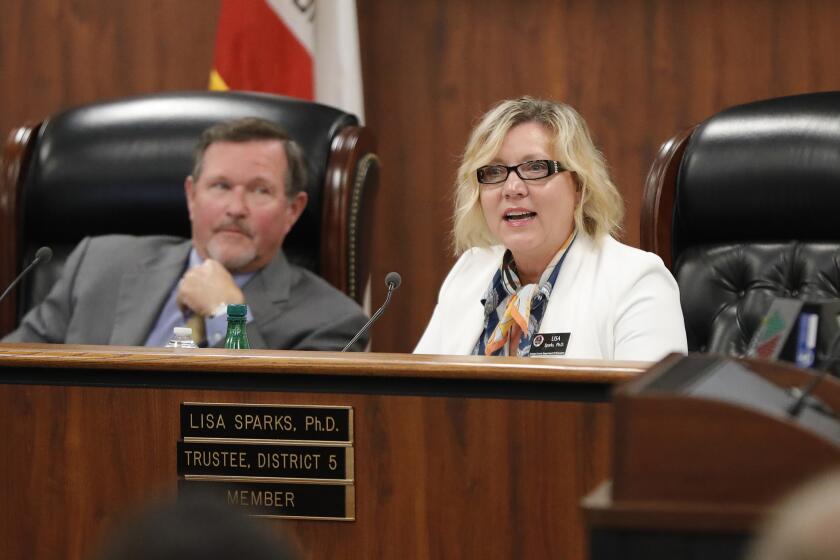CSU plans to expand student grants to cover full tuition and living expenses

California State University trustees voted Wednesday to expand grants to fund the full cost of tuition and living expenses for students who show they need the aid to attend college.
The decision is the first step to make good on a pledge they made last fall that at least a third of revenue from a 6% annual tuition hike would go toward financial aid. A more detailed plan will be presented to the board in May.
Over the five-year period of tuition increases, more than $280 million will go toward financial aid, increasing total funding to the State University Grant program to $981 million by the 2028-29 school year.
About 87% of Cal State students have their tuition fully or partly covered by grants and aid. Yet, many students still struggle with the cost of attending college because of living expenses such as food, housing and transportation.
Although there is regional variation of housing and food costs, total attendance costs statewide range from $22,000 to $32,000 annually. Nearly 40% of CSU students rely on loans to make up the difference between financial aid and actual costs.
“The fact is tuition as the price of admission is not what keeps students away from CSU,” trustee Julia Lopez said. “Almost 9 out of 10 students get some sort of tuition grant, but it’s other costs.”
The tentative pact drew mixed reviews, but union leaders said it provides major gains for the most underpaid instructors and other benefits.
The trustees favored giving students stipends, once their tuition costs are met, to cover their expenses, with the expectation that students would work less and graduate sooner. The State University Grant has traditionally been used to cover tuition. The stipends would be up to $5,000 and prioritize students with the greatest needs.
The trustees also voted to create consistent financial aid measurements and communications for students and their families after learning of significant differences across the 23 campuses, making it difficult for families to compare financial aid offers.
But there is one immediate challenge to the system’s financial aid improvement goals: the current national rollout of new FAFSA forms. The simplified Free Application for Federal Student Aid application was delayed from Oct. 1 to Dec. 31. Colleges and universities received notification on Tuesday that they wouldn’t receive students’ financial aid information until March at the earliest, nearly two months later than expected, squeezing students who generally have until May 1 to select a college.
Nathan Evans, CSU’s vice chancellor for academic and student affairs, said the problems with the new FAFSA may be even worse for California.
Students who are permanent residents or U.S. citizens but who have an parent who lacks legal status are unable to complete the new application because the system requires a Social Security number for each parent or guardian. Parents without Social Security numbers are locked out of contributing to the new FAFSA forms.
Cal Poly Humboldt students living in their vehicles amid a severe housing crisis found community in campus parking lot G11. But when the university ordered them off campus, their sense of safety was sundered.
Evans said leaders from CSU, the University of California, the community colleges and the state’s independent colleges met this week with the California Student Aid Commission to plan potential workarounds.
“This is a year like none other,” Evans said.
Smith is a reporter for EdSource, a nonprofit, nonpartisan journalism organization covering education in California.
More to Read
Start your day right
Sign up for Essential California for news, features and recommendations from the L.A. Times and beyond in your inbox six days a week.
You may occasionally receive promotional content from the Los Angeles Times.








